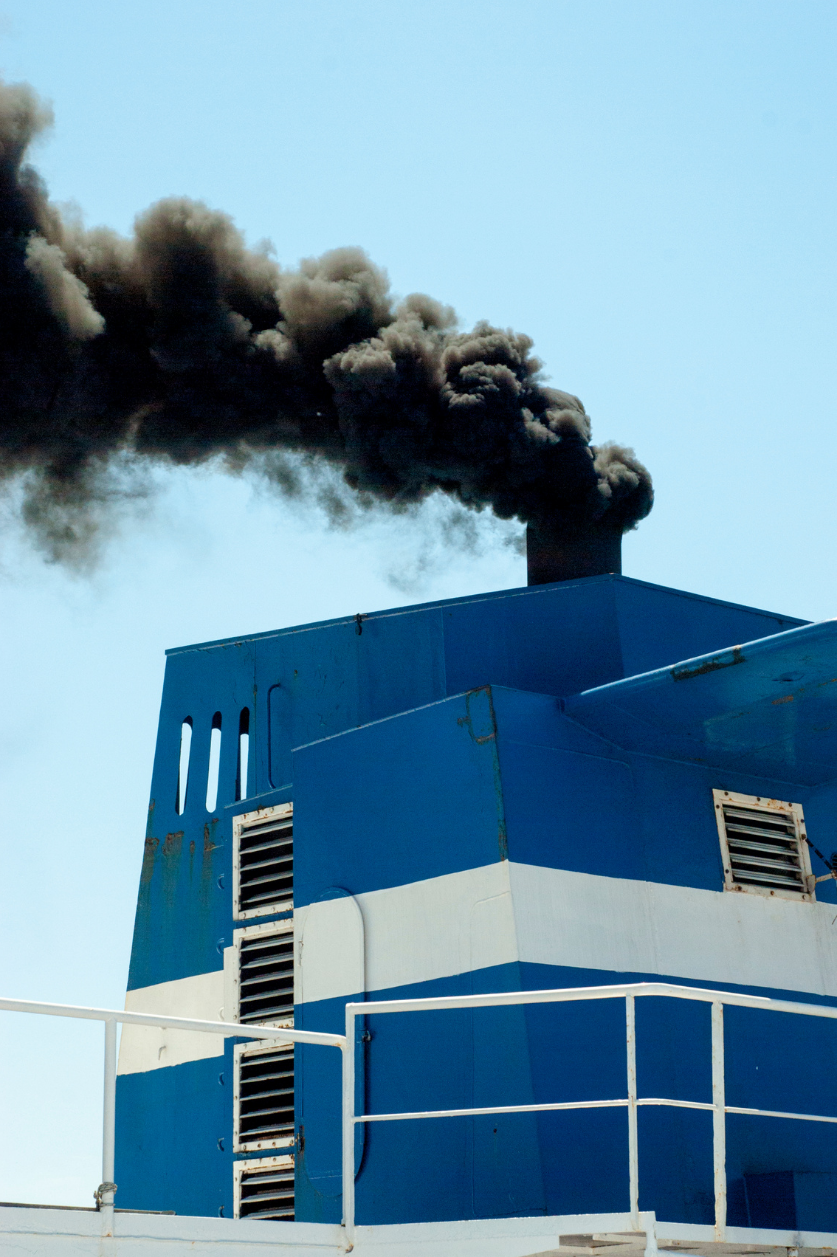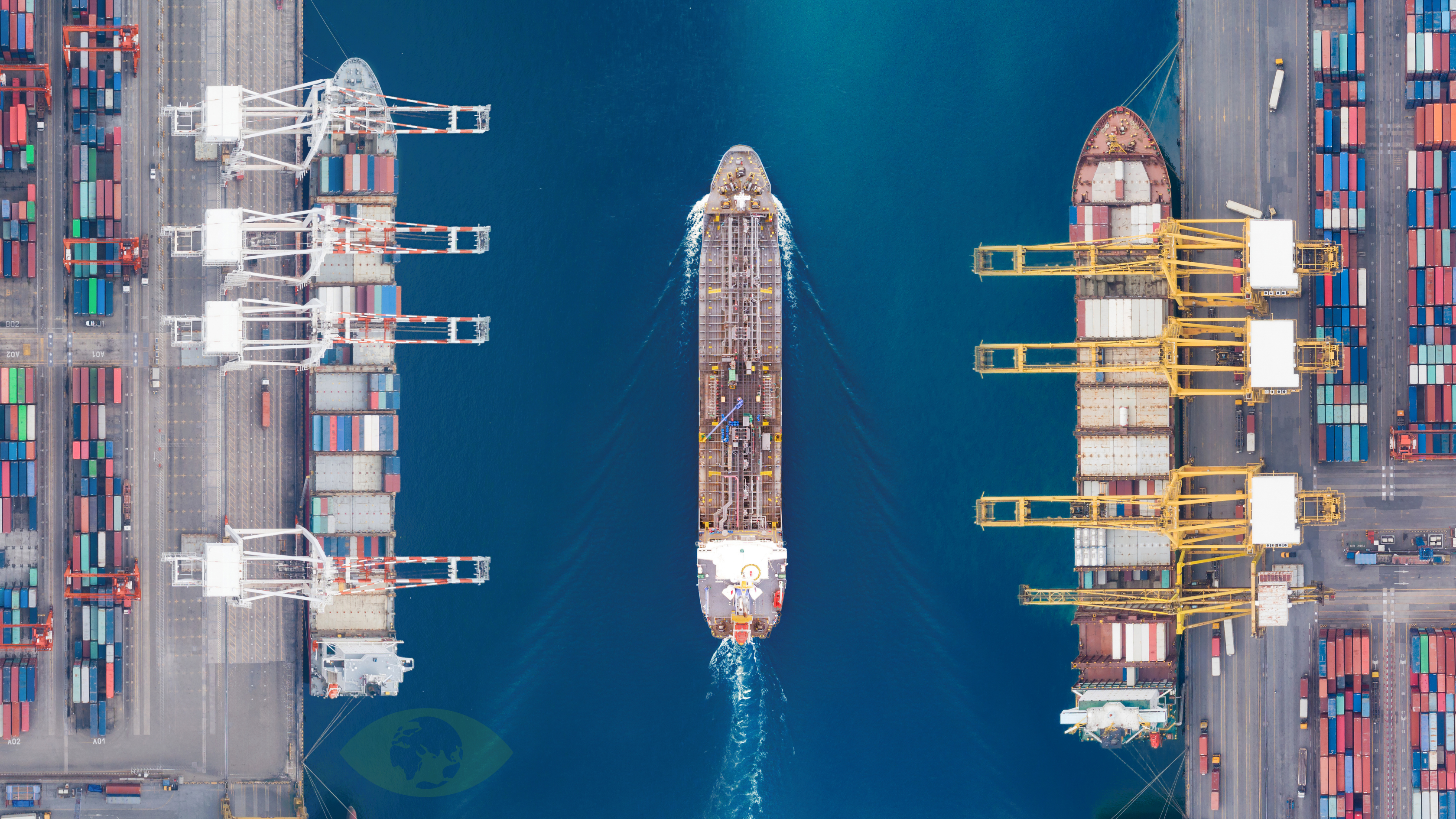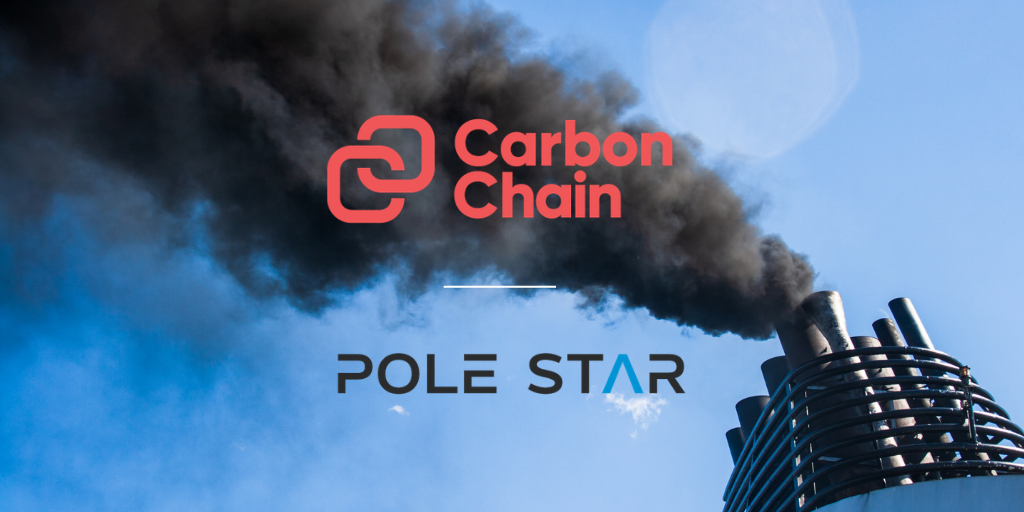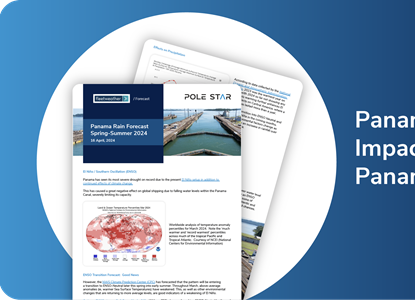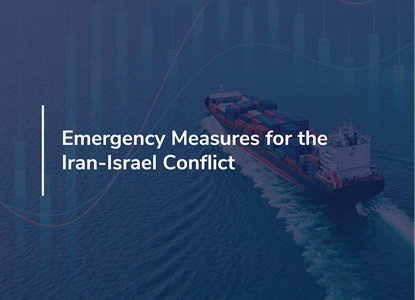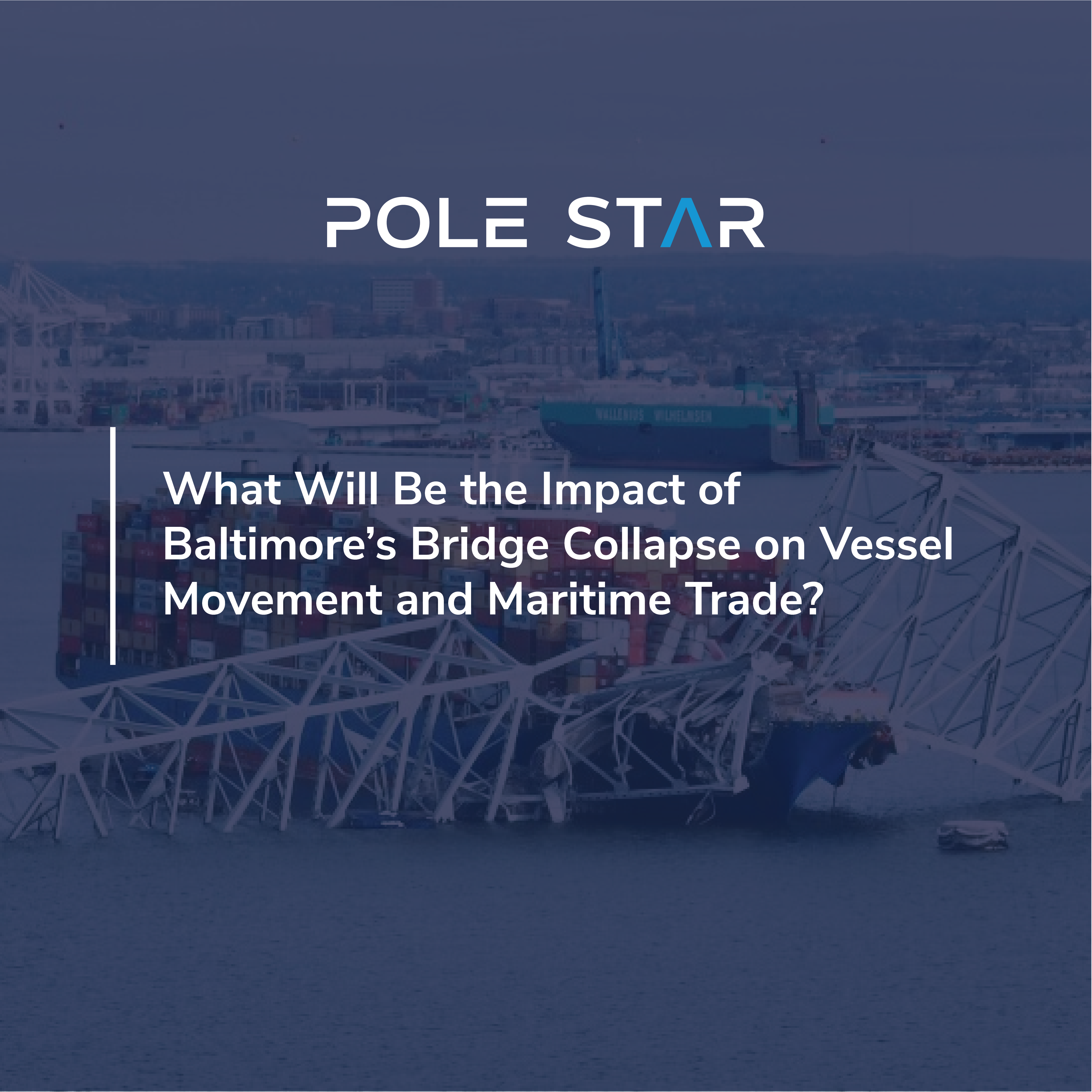- Green shipping corridors are zero-emission routes linking two or more ports.
- These routes rely on the implementation of zero-emission fuels for ship propulsion.
- By design, green corridors showcase sustainable fuels and optimised shipping paths in practice.
The COP26: Clydebank Declaration rallies for the creation of green shipping corridors. The goal is to establish at least six green corridors on major deep-sea routes by 2026. Plus, a road map is in place for a further three to four routes, with two to three routes still in development.
In line with these goals, Pole Star Global assesses the feasibility of green shipping corridors. This article addresses the following:
- Is the maritime industry on track to meet net-zero targets?
- Will green corridors transform the maritime industry toward net-zero emissions?
- Is the implementation of green shipping corridors feasible?
- Do green shipping corridors lack tangible action? Are they prone to greenwashing?
In answering these questions, you'll learn how the green shipping corridor movement has progressed. Gain insights into the fuel, port, and vessel requirements that bolster green shipping initiatives, for a more sustainable industry and global supply chains.
Green Shipping Corridors Analysis: Key Findings
This article delves into the current state of shipping, highlighting the industry as a significant contributor to global greenhouse gas emissions.
The International Maritime Organization (IMO) set an ambitious target, to achieve net-zero emissions by 2050. To meet this aim, a radical transformation of the maritime industry is needed. And for this, green shipping corridors offer a promising solution. This is because they're capable of mobilising key stakeholders, and the necessary investments and infrastructure.
Yet, formidable challenges persist that could obstruct progress. These challenges include:
- Uncertainty surrounding the choice of fuel pathways.
- Navigating a complex stakeholder landscape.
- High investment costs to support the green transition.
- Identifying priority shipping segments for intervention.
Addressing these challenges demands collaboration and transparency among key stakeholders. Plus, green technologies and AI-driven software solutions are crucial in facilitating a smooth transition to net zero emissions.
What Is Net Zero?
Achieving net zero is a balancing act. That is, the volume of greenhouse gas (GHG) emissions released into the atmosphere by a given entity must match the volume of GHG emissions removed from the atmosphere by that entity. This ensures total emissions are equal to zero.
The aim of net zero is to mitigate the impact of climate change by limiting global temperature rise to 1.5°C.
This follows the guidance provided by the IPCC and the Paris Agreement. Considering that the shipping sector accounts for approximately 2.9% of global emissions, addressing the challenges of climate change demands the decarbonisation of this particular industry.
Unfortunately, emissions from shipping have surged by 20% in the past decade. This hinders the emission reduction goals of dependent stakeholders across supply chains, with 80% of global trade dependent on shipping logistics.
In response to these challenges, green shipping corridors have been strategically planned to expedite the journey toward net zero for shipping on a global scale.
What Are Green Shipping Corridors?
Achieving IMO’s net zero goals and country-specific targets demands a collaborative approach. Decisions must involve multiple stakeholders, from government entities, port authorities, and ship owners. And decisions are to be made across four key focus areas: Fuel, ports, ships, and voyage optimisation.
Green shipping corridors cut through this complexity by offering ideal settings for new strategic regulations, partnerships, and fresh business ideas. It’s within these corridors that zero-emission shipping solutions are documented and reported.
The Global Maritime Forum’s last annual report released in December 2023 proposed 44 green shipping projects. This includes both short-sea and deep-sea routes. Examples are:
- Australia-Japan Iron Ore route:
- With a clear stakeholder landscape and strong political cooperation, this route stands out as a promising green shipping corridor. 90% of the Australian ore exported to Japan comes from companies dedicated to achieving net-zero emissions. As such, there's significant demand for emission reduction along this route.
- The most promising fuel pathway for this route is zero-emission ammonia. It's anticipated that the first ammonia-capable engines will be on the market by 2025. Making significant headway here is Wärtsilä, which introduced the first-ever 4-stroke ammonia engine for the industry in November 2023. This engine is capable of reducing emissions by 70% compared to a diesel solution of similar size.
- The Northeast Asia-US car carrier route:
- Along this route, shipping companies and cargo owners demonstrate a willingness to spearhead the shift to net zero. Yet, the frequent rerouting of vessels to alternative markets presents a challenge.
- This green shipping corridor will likely rely on green ammonia as a sustainable alternative fuel.
- The Portugal-Brazil route:
- Green hydrogen is emphasised as the alternative fuel of choice along this shipping corridor. This corridor will provide vessel access to green fuels and energy when calling at ports along the route.
- Shanghai-Long Beach route:
- The Ports of Los Angeles, Long Beach, and Shanghai, in collaboration with major shipping lines and cargo owners worldwide, have crafted an Implementation Plan Outline for the Shanghai-Longbeach green shipping corridor. This strategic plan aims to reduce emissions along one of the busiest container shipping routes globally.
By 2050, the target is to have:
- 20 ports across three continents supplying zero-emission fuels.
- Zero-emission fuels to power at least 200 vessels on major deep-sea routes.
Determining green shipping corridors demands a comprehensive evaluation that includes the following (as mentioned earlier):
- Fuels,
- Ports,
- Ships,
- Voyage optimization.
Each of these areas is elaborated on later in this article.
Green Shipping Corridor Map
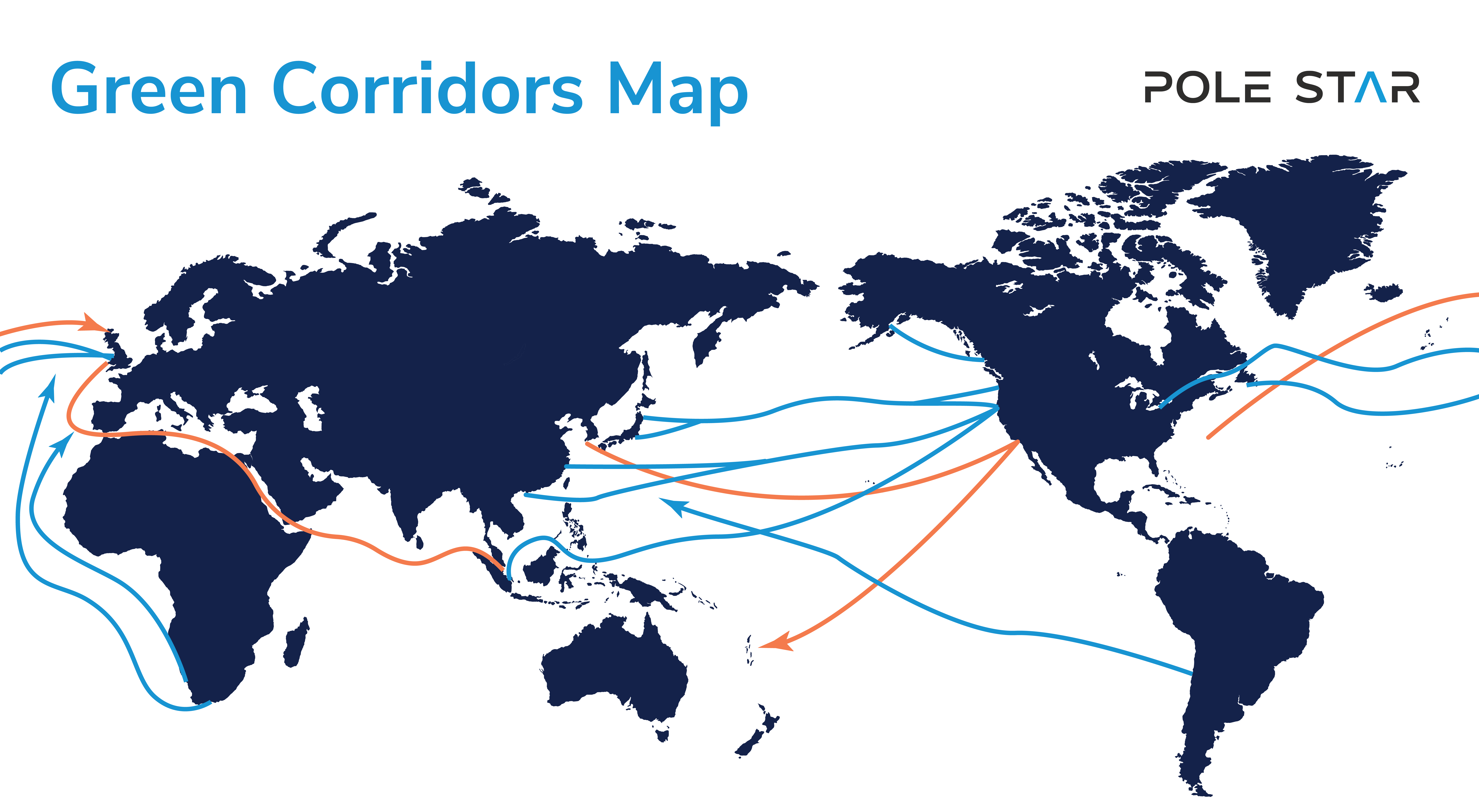
Is the Maritime Industry on Track to Meet Net-Zero Targets?
There’s Global Pressure for Net-Zero Shipping
The International Maritime Organization (IMO) mandates a 50% emission reduction for all vessels by 2050. This target aligns shipping with the long-term temperature goal set by the Paris Agreement. That is, to limit global temperature rise to 1.5°C above pre-industrial levels.
In response, several countries have declared a target for net-zero shipping emissions by 2050. This includes Japan, the United States, the United Kingdom, and countries within the European Union.
For instance, the EU introduced the EU Emissions Trading System (ETS), which came into effect on the 1st of January 2024. This is a "cap and trade" scheme that sets an emission limit for a defined geographical area. Companies then trade emission rights within this area.
Supporting the ETS, the EU-MRV system allows relevant entities to report carbon emissions according to the EU Regulation 2015/757.
The UK has also established a similar process. The UK MRV regime obliges ship operators and verifiers to collect and report emission data.
Where Are Green Corridors Today in Terms of Net Zero?
In 2018, shipping was responsible for approximately 2.9% of human-caused global emissions. This could surge to 130% of 2008 emissions by the year 2050. Under this scenario, as reported by the European Union, the maritime industry is not on track to meet net-zero goals.
While the IMO's revised emission reduction targets are in line with the Paris Agreement, it’s clear new measures are needed to meet the Net Zero Emissions by 2050 (NZE) Scenario. This demands a 15% emission reduction from 2020-2030.
While the maritime sector doesn’t align with net zero emission targets today, there's still potential to reach net zero by 2050.
Yet, technological advancements in green shipping fuels, supportive policies, and collaborative efforts across the entire value chain can propel the industry toward net zero. And the emergence of green shipping corridors lays the groundwork for this transition.
Will green corridors transform the maritime industry toward net-zero emissions?
For shipping decarbonisation to get on track, it’s estimated that 5% of fuels will have to be scalable zero-emission fuels by 2030. Green shipping corridors act as ideal test hubs to help the industry reach this tipping point. Once reached, this will enable rapid decarbonisation from 2030 onwards. This also necessitates the implementation of green technologies and AI-powered systems on a large scale and at lower costs.
Is the Implementation of Green Shipping Corridors Feasible?
The feasibility of any given green shipping corridor can be assessed under four key focus areas: Ports, fuels, ships and voyage optimisation.
Fuels: Alternative Green Fuels Are a Necessity for Green Shipping Corridors
At their core, green shipping corridors replace crude oil with zero-emission alternatives. As mentioned, an estimated 5% of fuels will have to be scalable zero-emission fuels by 2030 to achieve 2050 targets. This demands investments into electric motor engines powered by renewable energy, and methanol, ammonia, and hydrogen-based fuels. These green alternative fuel pathways need new infrastructure at ports and on ships. For instance, to set up appropriate fuel plants and to service zero-emission boats.
The transition to alternative fuels is already underway. Major container shipping lines, such as Maersk, Evergreen, CMA CGM, and COSCO, are already placing orders for vessels capable of burning both methanol and methane. For example, Maersk reported the successful voyage of its first dual-fuel vessel in August 2023. The vessel, loaded with cargo, sailed from South Korea to Denmark using a combination of green methanol and fuel oil.
In another example, ports in Rotterdam and Singapore house storage facilities for green fuels such as ammonia and methanol. And in September 2023, the first methanol-powered container ship, Laura Maersk, sailed between these two countries. This ship delivered up to a 65% GHG emission reduction compared to fossil-fuel-dependent engines.
Meanwhile, the cargo firm North Sea Container Line is launching a ship powered by ammonia to operate between Norway and Germany.
Current Challenges: Undecided Fuel Pathways
Despite this progress, challenges remain that could impede further advancement. One crucial obstacle to address is the uncertainty over the fuel pathway of choice.
So far, eight corridors have decided on one or several fuel pathways. That is:
- 16% of initiatives focus on green methanol,
- 16% of initiatives focus on green ammonia,
- 9% of initiatives focus on advanced biofuel,
- 9% of initiatives focus on green hydrogen,
- A further 9% of initiatives focus on green electricity.
However, for most initiatives (41%), the fuel pathway is yet to be determined. In these instances, it seems key decision-makers are trying to maintain flexibility for as long as possible. This indecisiveness is compounded by the insufficient involvement of fuel providers. This is a symptom of a complex stakeholder environment. (Another key challenge that's looked at below.)
When choosing the appropriate fuel pathway, there are two possible strategies:
- Multi-fuel pathway:
- The multi-fuel strategy is a more prudent approach, hedging risks that come from an over-reliance on a single technology. This risk is more prominent for larger routes.
- Single-fuel pathway:
- A single-fuel pathway gives more concentrated efforts and faster progress. However, the downside is that it puts all investment efforts in one basket.
The debate remains about which fuel strategy is the best approach. This decision must be made on a case-by-case basis, performing a thorough cost-benefit analysis for each fuel option. Yet, such analyses often result in ambiguous outcomes due to several unknowns - as with any new technology.
To illustrate, consider the below comparison of green ammonia and green methanol.
In the past year, green methanol has taken the lead over ammonia in shipping. Major players like Maersk have placed large orders for dual-engine vessels running on methanol. However, there are cost concerns over implementing this technology on a global scale, as noted by the International Energy Agency (IEA). These costs stem from CO2 capture and supply to ensure the methanol used is green.
As such, the IEA recommends well-planned facilities in areas that have abundant renewable resources and affordable biogenic CO2 options. (Biogenic CO2 is derived from living organisms rather than the burning of fossil fuels.) This will create low-emission e-methanol for $47 per gigajoule (GJ). The IEA predicts these costs will drop to $35 per GJ by 2030.
You must note that these estimates assume optimal production. If the supply of e-methanol is less than optimal, the total cost of ownership for methanol-fueled ships could be triple that of conventional vessels.
In contrast, e-ammonia would be cheaper than even the most efficiently produced e-methanol. Specifically, e-ammonia is estimated to cost $40 per GJ (dropping to $35 per GJ by 2030).
However, adding to the complexity of this discussion, initial investments supporting e-ammonia are higher. Employing safety measures that manage ammonia's potential toxicity is costly. As such, the IEA estimates a transition cost of $75 billion to convert half of all containerships to fleets relying on ammonia. Now, compare this to the $30 billion needed for e-methanol ship conversion.
In summary, the shipping infrastructure required to support e-ammonia is higher than that of e-methanol. But, once that infrastructure is in place, the production costs of e-methanol fuels are greater.
This example demonstrates the challenge of selecting the appropriate fuel pathway based on a comprehensive cost-benefit analysis.
With further analyses of this nature, the IEA reports that by 2050, the collective fuel pathway across green corridors will be as follows:
- 50% e-ammonia fuels,
- 20% e-hydrogen fuels,
- 20% biofuels,
- and then methanol fuels will supply the marginal quantity by 2050.
Current Challenge: Cost of the Green Shipping Transition
The latter point leads nicely onto a second challenge of green fuel transition. The cost of green shipping.
Some sceptics question the widespread adoption of green shipping corridors. They argue that the necessary changes come with a large price tag to construct new infrastructure and upgrade fleets. Not to mention the increased expense of alternative green fuels compared to their fossil fuel counterparts.
These investments are factored into the Total Cost of Ownership (TCO) for each vessel. The TCO is a crucial element when determining the viability of routes and fuels within a green shipping corridor. Introducing zero-emission fuels will raise operational costs initially. This means it's imperative to share the burden and risk across the green corridor. The aim is to bridge the TCO gap between fossil-fuel-powered vessels vs those powered by green fuels.
Government intervention is essential here, to mitigate investment risks for fuel producers and vessel/fleet operators. Initiatives could include:
- Implementing contracts based on cost-for-difference,
- Providing tax incentives and direct subsidies.
The above initiatives will create a competitive landscape that facilitates the adoption of green shipping corridors.
Ports: Port Infrastructure Is Essential for the Adoption of Green Fuels in Green Shipping Corridors
Ports within green shipping corridors need the required infrastructure to facilitate the green fuel transition. This means supporting green fuel storage and bunkering (truck-to-ship, and ship-to-ship), and/or charging facilities.
Technological progress has enabled the successful bunkering of green fuels. Notably, in September 2023 the Port of Rotterdam marked the first successful bunkering of green methanol-powered container vessels. Plus, in 2022, Scandinavia introduced the world’s first carbon-free ammonia fuel bunker network. Similar advancements are emerging globally. For instance, countries like Japan are developing a bunkering boom for the ship-to-ship transfer of ammonia fuel.
Current Challenges: High Stakeholder Complexity
Key stakeholders for any given port along a green corridor include:
- Port authorities,
- Vessel owners and operators,
- Government and regulators,
- Fuel producers,
- Customer/cargo owners,
- Financial institutions.
Involving all stakeholders - who are likely dispersed across vast geographical areas - is crucial. Successful involvement depends on trust and decision-making processes with clear goals.
As they progress, green shipping corridors will extend to involve a broader range of non-shipping entities. Examples include fuel producers, cargo owners, and research and development teams. And so the magnitude of this challenge will escalate. Additionally, when competitors use the same corridor, it hinders the sharing of information. If not addressed, this could cause a potential bottleneck.
To meet this challenge head-on, group efforts must be effectively led using the right management systems. However, this continues to be a tough obstacle in the ongoing creation of green corridors.
Ships: Green Shipping Corridors Must Upgrade Vessels to Operate Using Low-Carbon Fuels
Ships must have the right infrastructure in place to operate using green fuels. This includes zero-emission fuel tanks and suitable energy converters. Currently, vessels can be upgraded to support the following green technologies:
- E-hydrogen fuels,
- E-ammonia fuels,
- Liquified Natural Gas (LNG),
- E-methanol (biofuel),
- Wind-assisted technology,
- Cold iron connectivity.
*Cold iron: Supplying electrical power to a ship while it's docked, with both its main and auxiliary engines turned off. This is also known as shoreside electrical power provision at berth.
At present, only 0.6% of global ships operate on alternative fuels. Yet, as attention to, and investments in sustainable practices rise, this percentage is on the rise. For instance, Amazon, in collaboration with companies like Patagonia and Ikea, has extended its emission reduction contract with shipping giant Maersk, as part of the Zero-Emissions Maritime Buyers Alliance (ZEMBA).
And this momentum for green fuels is seen on a global scale, across industries. Notably, China aims to produce over half of the world's green ships by 2025. Featured vessels include those powered by liquified natural gas (LNG) and e-methanol.
There's also been a focus on vessel enhancement for increased efficiency and reduced energy consumption. A noteworthy example is the successful test voyage of the Pyxis Ocean in August 2023. This ship uses wind-assisted technology to reduce fuel consumption, which has given fuel savings of up to 30%.
Additionally, in December 2022, Stolt Tankers ordered a fleet of six stainless steel parcel tankers designed for optimal fuel efficiency. Features include hull optimisation, shore power connection, and future-ready adaptations for battery and methanol propulsion. Plus, the company has pioneered a new green technology to reduce fuel consumption. This is an eco-friendly coating to be applied to the hull of one of its chemical tankers.
Exploring promising technologies such as Lithium Ion batteries also remains a key focus, with notable advancements in this field.
Current Challenge: Indecision on Which Vessels to Target
Pole Star Global has collected global data to assess the current landscape of zero-emission vessels. These unique insights are given below:
- LNG capabilities:
- Currently, 936 vessels in service are LNG capable (have dual fuel vessels).
- 413 vessels are LNG-ready - this means they can be converted more easily.
- E-methanol-fueled:
- There are 190 methanol-fueled vessels. 128 of these are container vessels, with one currently in service.
- There are 107 methanol-powered container vessels on order.
- There are 168 methanol-ready vessels, 79 of which are container ships. 26 methanol-ready ships are in service, 104 are on order, and 13 are under construction.
- E-ammonia fueled:
- 9 ammonia-powered vessels are on order (7 from EPS and 2 from Exmar).
- 230 vessels are ammonia-ready, with 58 in service and 123 on order. 66 of both categories are container vessels.
- E-hydrogen fueled:
- There are 17 hydrogen-fueled vessels operational along this corridor, with 8 in service.
- 32 ships are hydrogen ready, 14 of which are in service. Out of these, only 2 are container vessels, with most being passenger vessels and crew/supply vessels.
- Wind assisted:
- There are 46 total wind-assisted vessels, 34 in service and 4 on order. None of these ships are container vessels.
- Vessels that can cold iron*:
- There are 1533 vessels (958 container vessels) operating along this route that are cold iron capable.
Currently, most green shipping corridor projects concentrate on the largest shipping segments - container shipping and ferries. Even though there are attempts to start similar projects for dry bulk, tanker, and cruise ships, decisions on which shipping areas to prioritize for ten corridors are still pending. This choice will impact initial efforts and the creation of plans to gradually include more segments in the future. These decisions play a critical role in achieving 2050 targets.
Voyage Optimisation: Green Shipping Corridors Aim to Cut Energy With Optimal Shipping Paths
Voyage optimisation ensures vessels navigate to their destination more efficiently. While this practice is crucial for reducing fuel consumption, note that this process alone will not yield net zero. Yet, used alongside alternative green fuels, voyage optimisation facilitates a smooth net zero transition by decreasing fuel consumption from the start.
Key voyage optimisation techniques include:
- Just-In-Time Arrival:
- Ship speed is adjusted to avoid delays during port entry. This, in turn, minimises greenhouse gas emissions. Ships often spend up to 9% of their time waiting to enter a port. Just-in-time arrival techniques can yield fuel reductions of up to 23% for the entire voyage and port call.
- Port Call Optimisation:
- Ship speed is refined to improve overall port efficiency. This means cargo owners can deliver their goods reliably and according to schedule.
- Weather Routing:
- Environmental factors like tides, winds, and currents are incorporated into the planned ship routes to enhance voyage efficiency.
- Dynamic Under-Keel Clearance:
- Routes are planned to ensure vessels maintain sufficient under-keel clearance for a safe journey, considering environmental conditions during the voyage. This clearance guarantees an adequate water depth beneath the ship for a secure transit.
Implement the above voyage optimisation techniques with Pole Star Global's Podium5. Podium5's cutting-edge platform provides weather routing and route optimisation services. Utilise Podium5's smart automation and expert advice and be empowered to make informed decisions to reduce fuel use.
Powered by an advanced AI-based voyage optimisation algorithm, Podium5 excels at enhancing shipping time and TCE (Time Charter Equivalent), all while minimising fuel consumption and emissions. The platform revolutionises planning processes and ensures precise Estimated Time of Arrivals (ETAs) for every journey.
Podium5 is here to support your net zero goals. For more information on how you can action voyage optimisation practices, request a demo here.
Summary: Is the Implementation of Green Shipping Corridors Feasible?
Voyage optimisation techniques, advancements in ship design, and innovations in fuel efficiency are already showing promising progress to establish green shipping corridors. Yet, implementing these initiatives in isolation does not secure a widespread, global transformation. For this, coordinated efforts across various industries and stakeholders are needed. These collaborative efforts must:
- Decide on a fuel pathway for each corridor, to focus efforts, infrastructure, and investment.
- Instill the required tax credits and contracts based on cost-for-difference.
- Continue to invest in green fuels and supporting technology. Notably, the needed port and vessel infrastructure to support green fuels.
Without addressing the above, green shipping corridors will remain an unrealized concept.
Do Green Shipping Corridors Lack Tangible Action? Are They Prone to Greenwashing?
Greenwashing is the exaggeration of a given entity’s sustainability claims. This creates the impression that an entity's environmental impact is smaller than it is in reality.
Regarding green corridors, the absence of a universally recognised and standardised definition raises concerns about greenwashing. This lack of clarity around the concept can cause confusion on how to effectively support and regulate these routes.
These greenwashing concerns could undermine the full potential of these corridors. As such, it's important to acknowledge the risk factors that could cause greenwashing in the green corridor movement. Three key risk factors are identified and addressed below:
- Low barriers to entry:
- The absence of stringent criteria allows anyone to declare a shipping corridor as green. This openness leaves room for stakeholders to design corridors without firm commitments.
- Public relations advantages:
- The announcement of a green corridor attracts significant political attention. There's a risk actors might exploit this by declaring intent without taking decisive actions. As more corridors are introduced, the public relations benefits for all involved may diminish.
- Competition:
- The increasing involvement of ports in the green corridor movement creates pressure for others to follow suit to remain competitive. Unfortunately, some may do so without genuine intent to install the necessary changes to achieve carbon-neutral shipping.
Solution: Announcements should be treated as signals of intent only, to be followed by tangible action
To counteract greenwashing within the green corridor movement, transparency plays a crucial role. This involves standard reporting on the progress of green corridors and educating stakeholders. Plus, the sharing of data and challenges will foster an environment where all participants collaborate to address key challenges and to make collective progress.
Is Shipping Prepared to Realise the Full Potential of Green Corridors?
In theory, green shipping corridors offer the requisite conditions for achieving net zero emissions. They are dedicated spaces for testing, innovation, and investment. As such, these corridors hold the potential to revolutionise the maritime industry. From an industry known for its high carbon emissions, green corridors can transform shipping to be a front-runner in the new net-zero economy.
This is an ambitious goal and so challenges are to be expected. The green corridor movement does face obstacles, yet this doesn’t render the concept infeasible. Through collaborative efforts transcending geographical and organisational boundaries, each challenge can be addressed collectively.
Alongside this collaboration, industry stakeholders must ensure the adoption of appropriate technologies, artificial intelligence, and software solutions to facilitate a seamless transition to net zero.



